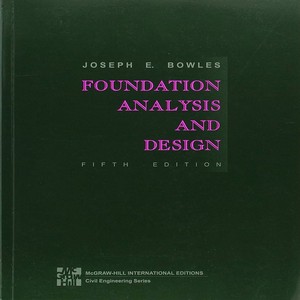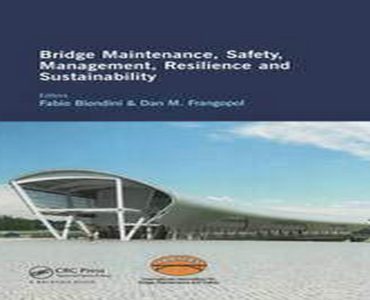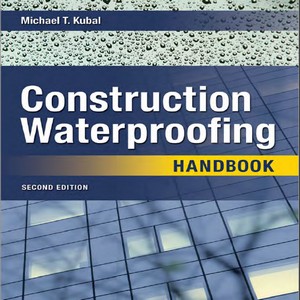Foundation analysis and design fifth edition
By Joseph E. Bowles
This fifth edition of Foundation analysis and design continues the format of the previous four editions for providing current state-of-art (SOA) and state-of-practice (SOP) methods in Foundation Engineering.
From author-user interaction I have concluded that SOP tends to lag SOA on the average of about 10 years.
There is a range, however, where a few larger organizations are at the cutting edge of technology and many—particularly the smaller firms—are at varying intermediate stages.
Foundation analysis and design, which is also widely used as a practitioner’s reference, includes SOP material but with major emphasis on SOA.
The latter is accomplished by including a mix of practice, “how to,” and latest suggested design/analysis methodology.
This produces a text compatible with the general goals of the American Society of Civil Engineers (ASCE) and other professional organizations, which have determined that technical graduates have a postgraduate period of only 5 to 7 years before obsolescence becomes a factor in their practice.
Design methods tend to vary between geographic regions, partly from instructors’ influences and partly because there are few “design absolutes.”
As a consequence it is necessary to include the generally accepted alternative methods but to temper these with recommendations and suggestions on their use.
This allows the user access to regional differences and provides “averaged” design results or the option to select the most appropriate alternative on a site-specific basis.
Although these comments may appear overly practice-oriented, the fact is that the student must be aware of these real-world conflicts, geographical differences, and alternatives so as to be productive upon graduation.
Foundation analysis and design emphasizes computer methods and the Finite-Element Method (FEM), involving matrix methods given in the previous editions, to reflect the widespread use of the personal computer and of the FEM in practice.
Be aware, however, that the finite-element method does not have a unique definition.
To some practitioners it is any mathematical representation of the continua (beams, plates, or solids) using discrete (or finite) elements.
To other practitioners the FEM definition is reserved only for modeling the soil mass and the interfacing structural elements—sometimes this is called “soil-structure interaction” modeling.





Reviews
There are no reviews yet.